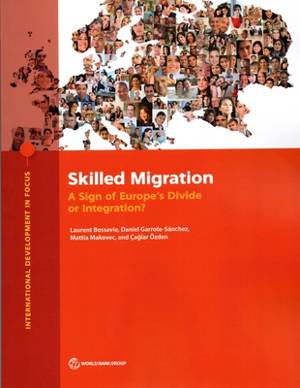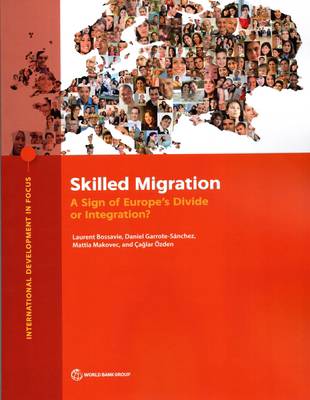
- Afhalen na 1 uur in een winkel met voorraad
- Gratis thuislevering in België vanaf € 30
- Ruim aanbod met 7 miljoen producten
- Afhalen na 1 uur in een winkel met voorraad
- Gratis thuislevering in België vanaf € 30
- Ruim aanbod met 7 miljoen producten
Zoeken
Skilled Migration
A Sign of Europe's Divide or Integration?
Laurent Bossavie, Daniel Garrote-Sánchez, Mattia Makovec, Çaglar Özden
€ 61,45
+ 122 punten
Omschrijving
Skilled Migration: A Sign of Europe's Divide or Integration? examines the trends, determinants, and impacts of migration of high-skilled workers within the European Union in the past two decades. High-skilled migration, whether internal or international, is largely a symptom rather than a cause of the gaps in labor market and educational opportunities, productivity, welfare, and the quality of institutions across the regions. Free movement within the European Union is an incentive for workers and firms to take advantage of these gaps by moving from low- to high-productivity sectors and regions. This process, however, results in winners and losers depending on the extent of the complementarity and substitutability between migrants and natives and on the capacity of the sending regions to realize benefi ts from return or circular migration and other knowledge spillovers. This study assesses the economic benefits and the costs of skilled migration in the short and long runs, emphasizing the potential implications of a large outflow of highly qualified workers on the economies of the originating regions. This book uses empirical analysis to present recommendations for labor market and education policies and identify effective ways to address the various costs that migration induces among different skill groups within regions that send migrants and those that receive migrants. These methods must also improve cross-country coordination to more effectively unlock the overall benefits of migration.
Specificaties
Betrokkenen
- Auteur(s):
- Uitgeverij:
Inhoud
- Aantal bladzijden:
- 108
- Taal:
- Engels
- Reeks:
Eigenschappen
- Productcode (EAN):
- 9781464817328
- Verschijningsdatum:
- 21/04/2022
- Uitvoering:
- Paperback
- Formaat:
- Trade paperback (VS)
- Afmetingen:
- 216 mm x 279 mm
- Gewicht:
- 367 g

Alleen bij Standaard Boekhandel
+ 122 punten op je klantenkaart van Standaard Boekhandel
Beoordelingen
We publiceren alleen reviews die voldoen aan de voorwaarden voor reviews. Bekijk onze voorwaarden voor reviews.








